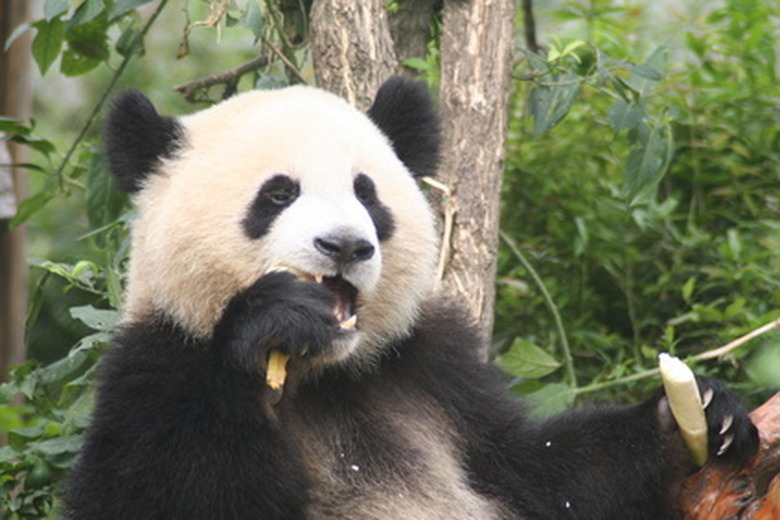The Complete Life Cycle Of The Giant Panda
The giant panda, Ailuropoda melanoleuca, is a relative of the bear and is native to mountain ranges of central China. This creature once had a much larger range and lived in the lowlands, but habitat loss has restricted its possible range. Giant pandas prefer forests with a dense bamboo understory, and have a diet composed almost entirely of this plant.
The giant panda lifespan in the wild is between 14 and 20 years, however in captivity they can live for up to 30 years. Except for mating and the time spent between mothers and cubs much of the life cycle of a panda is spent in solitary.
Panda Reproduction
Panda Reproduction
The giant panda reaches sexual maturity at the age of about five years and remains capable of reproduction until about the age of twenty. Females ovulate entering estrus for one to three weeks in the spring, but are only receptive to the male for two to three days.
They call to one another and use scent markers to find and communicate with other pandas for mating. Breeding occurs every two to three years, due to the time needed to raise cubs. Females may show estrus-like behavior such as vocalizations before they are mature enough to breed.
Panda Gestation Period And Embryos
Panda Gestation Period And Embryos
While the panda embryo forms after mating, the mother does not immediately become pregnant. Instead, development stops at the blastocyst, or single cell stage. According to the Giant Panda Species Survival Plan and Animal Planet, the giant panda has delayed implantation, like other bear species.
It can take three to six months for the embryo to implant in the uterus. Wild pandas can have up to 6 babies in their lifetime.
Panda's Giving Birth
Panda's Giving Birth
Pandas typically give birth in the autumn months between August and September. A female giant panda remains pregnant for 95 to 160 days and gives birth to one, two or exceedingly rarely three cubs. Newborn pandas are tiny, at only 3 to 5 oz. and 4 to 5 inches long.
They are pink, hairless, blind and entirely reliant on their mothers. After mating the male leaves the female and plays no part in helping to raise their cubs.
Panda Cub Survival
Panda Cub Survival
In cases where more than one cub is born, only one usually survives. Low survival rates are often due to a behavior known as 'cub-abandonment' where the mother selects the strongest cub and gives them all her care.
In captivity, all cubs may be raised to maturity.
Panda Cubs
Panda Cubs
For several days after birth, the mother panda cares for her cub. She does not leave the den even to feed or drink. In some cases, the mother does not leave to eat until the cubs are three to four weeks of age.
Cubs are left on their own for only short periods, and will not open their eyes until the age of six to eight weeks. They aren't capable of moving around much on their own until they are eight to nine months old. Baby pandas are weaned around nine months of age to one year.
Young Adults
Young Adults
According to the Smithsonian National Zoological Park, wild pandas leave their mothers at one and a half to three years of age. Young pandas then wander for several years to find the best territory. Females often live close to their mothers, while males wander more.
Pandas were once thought to be solitary, meeting only to mate, but recent data indicates that they may share territories in small groups, and meet outside of the breeding season. When they are sexually mature, these animals are 2 to 3 feet tall at the shoulder and weigh between 220 and 250 pounds.
Cite This Article
MLA
Palmer, G.D.. "The Complete Life Cycle Of The Giant Panda" sciencing.com, https://www.sciencing.com/complete-life-cycle-giant-panda-6756903/. 22 November 2019.
APA
Palmer, G.D.. (2019, November 22). The Complete Life Cycle Of The Giant Panda. sciencing.com. Retrieved from https://www.sciencing.com/complete-life-cycle-giant-panda-6756903/
Chicago
Palmer, G.D.. The Complete Life Cycle Of The Giant Panda last modified March 24, 2022. https://www.sciencing.com/complete-life-cycle-giant-panda-6756903/
